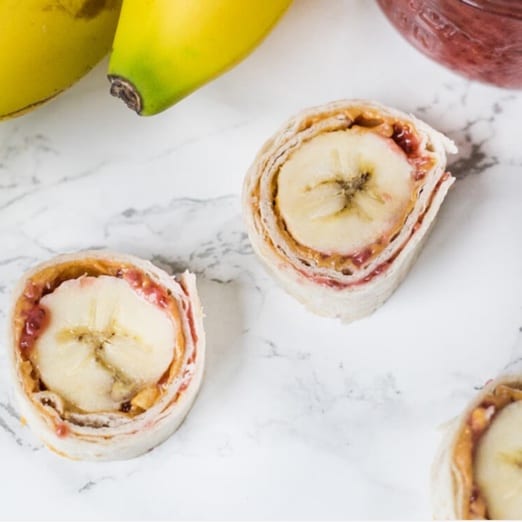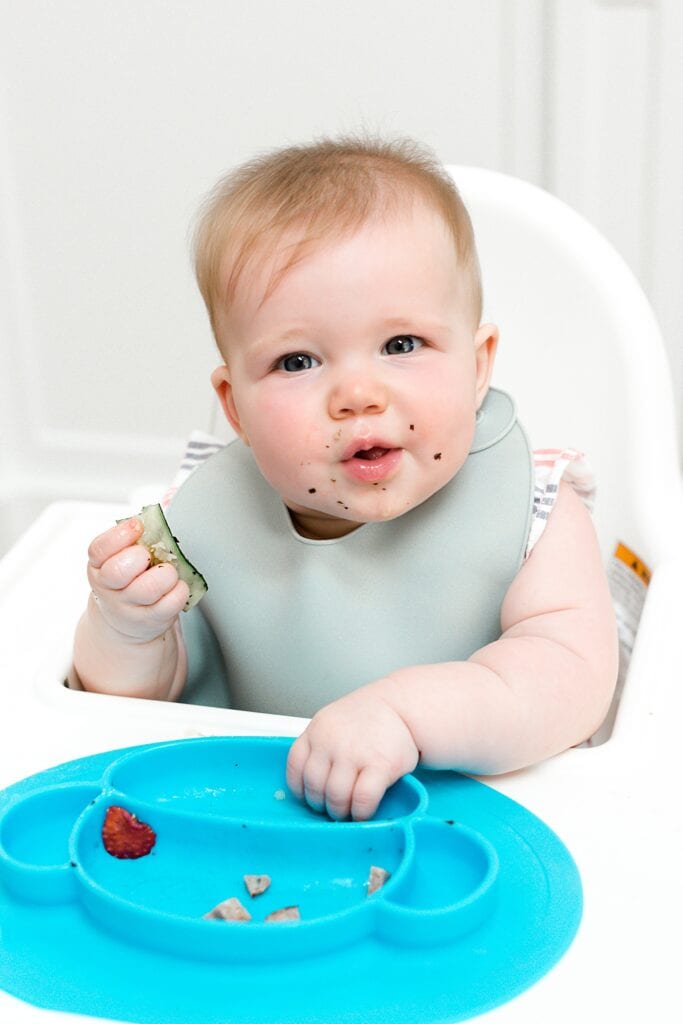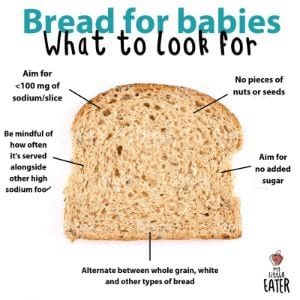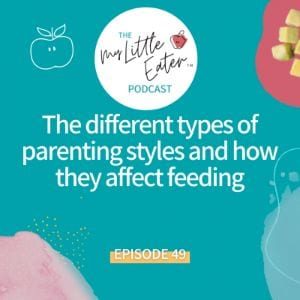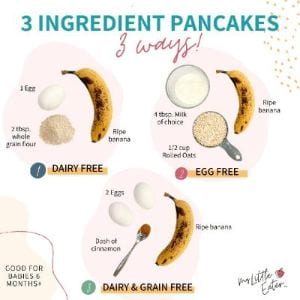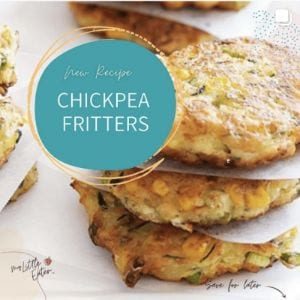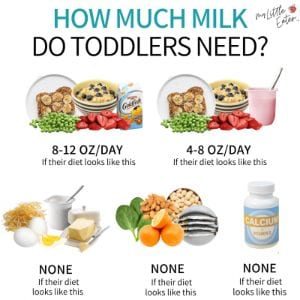
Note: The recommendations outlined in this blog post are for informational purposes only. They are not prescriptive, nor are they individualized. Always consult your doctor and/or dietitian for specific advice before taking any vitamin or mineral supplement.
Many of us parents worry endlessly about how well our toddler is eating. And it’s concerning when you’re not sure if they’re getting the proper and essential nutrients they need to achieve good health. But do they really need to be taking a multivitamin to close the nutrition gaps?
Here’s the Coles notes version of my answer: Research tells us that for healthy toddlers, a nutritious and well balanced diet is the best way to be getting all the vitamins and minerals they need. Whole foods offer more, and better absorbed, nutrients than multivitamin supplements can offer.
So generally speaking, if your toddler is healthy (growing along their growth curve, no medical/nutritional diagnosis), eats a decent variety of foods, is active and sees a doctor regularly, they should not need a multivitamin. Keep in mind that a varied, healthy diet for your toddler means: 2 servings of meat and alternatives, 4 servings of grains/starches, 2 servings of milk and dairy products, and at least 4 servings of fruit and veggies daily (on average per day, calculated over a one week period).
If you’re not sure what a serving is, what’s covered under each category, and how to serve meals and snacks to cover your bases, check out my Feeding Toddlers online course for lots of help!
But what if my toddler really does need a multivitamin?
Now, your toddler may need to supplement their diet with a vitamin if they:
- Omit/seriously under eat from certain food groups altogether (think dairy, meat, all fruits and veggies, seafood, etc.)
- Have growth curve abnormalities (not growing along their own individual growth curve)
- Have an allergy or cultural restriction (like vegan, vegetarian, etc.)
- Have a medical/digestive condition (like celiac, Crohn’s, etc.)
- Eat mostly processed foods (by which I mean… fresh food is just not part of their diet)
Omitting Food Groups & Picky Eating:

For many picky eaters, my first route is likely to not immediately jump to a multivitamin. Especially when we parents often have more of an issue with the quantity of what they’re eating vs. omitting full food groups. In fact, when I teach parents of my Feeding Toddlers online course how to analyze their child’s diet, they often find their “picky” toddler is actually getting more variety than they initially thought (piece of mind!!)
Many times, toddlers eat enough fortified foods like breakfast cereals (fortified with riboflavin, iron, thiamin and folic acid) or milk (fortified with vitamin D, contains vitamin A etc.), and therefore don’t always require a multivitamin for support. Over the span of a week, most usually get everything they need from offering a varied diet.
However, if your picky eater has been omitting whole food groups (specifically fruits & vegetables) for a long period of time (1+ months), you will likely need to temporarily support them with a multivitamin while they learn to overcome this challenge.
Now, if they’re omitting food groups other than fruits/veggies (or if they’re vegetarian/vegan), I tend to lean more towards offering specific supplements that tackle the specific nutrient needs, rather than a general multivitamin with low doses of each vitamin type (which may or may not even solve the entire problem to begin with).
For example, for a vegan child who doesn’t consume dairy products, I may recommend supplementation with calcium. For a child who rarely eats seafood, I’d recommend an omega-3. And for a child who avoids meat, I might recommend a B12 supplement.
That sort of thing.
But see the difference? If omega-3’s or if calcium or any specific nutrient is the issue…I like to make sure we get higher doses of those specific nutrients individually, vs. lower doses of a bunch of different nutrients in a multivitamin that may not be needed to begin with.
Abnormal Growth Patterns

If your child has a small appetite, it may not be anything to initially worry about, considering that your child is likely eating as much as their appetite will permit. However, if your child is experiencing declining or stagnant growth on their growth curve, it could mean that they’re not absorbing all the nutrients they need (think digestive/medical issues like celiac) or they’re appetite is low due to a mineral deficiency. The biggest red flag to watch for is iron if your child is losing weight. Your doctor may advise you to take a multivitamin with iron, or a separate iron supplement, to ensure nutrient needs are being met.
Eating only processed food

If your child is eating mostly processed foods, this can be concerning. Many processed foods contain very little nutritional value for your toddler. Most vitamins and minerals are found in fresh, whole foods, and fruits and vegetables, so your child may benefit from a multivitamin in this case. My suggestion though, is don’t use the multivitamin as just a mask to the underlying problem of an extremely unhealthy diet. Check out my Feeding Toddlers course for help to slowly begin introducing more fresh, whole foods to your toddler, so that eventually they may not need to rely on a multivitamin anymore.
A note on Vitamin D
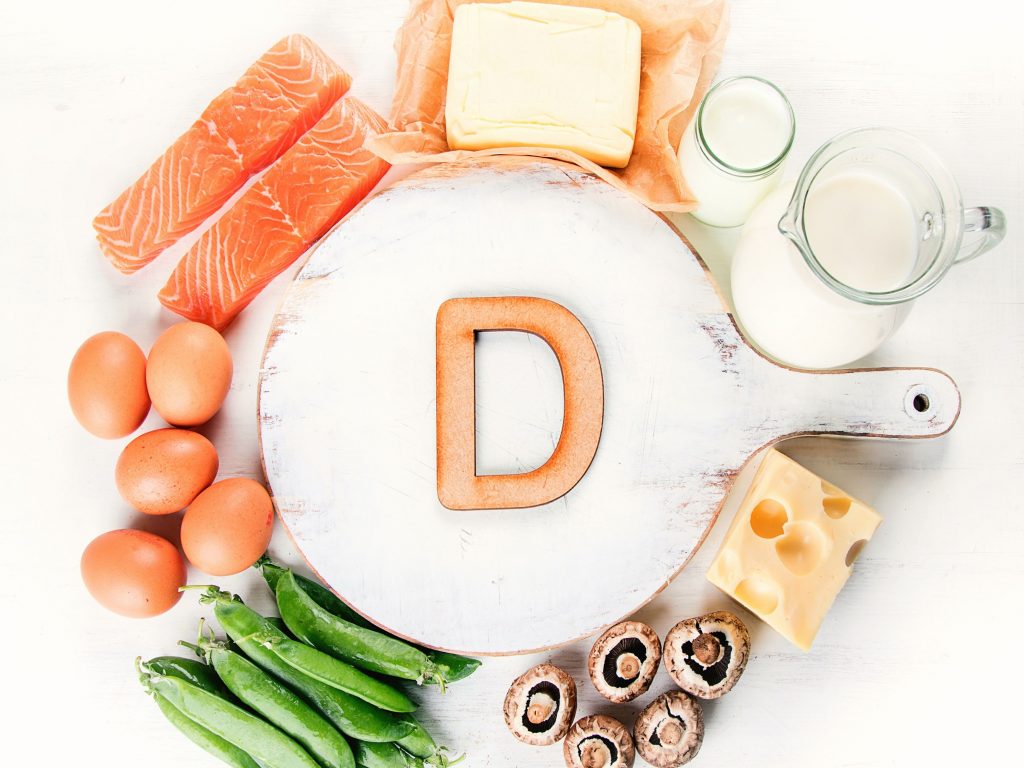
Vitamin D is synthesized in our skin from the sun, and can also be commonly found in food sources such as fatty fish ( tuna and salmon for example), and in fortified food products like milk and milk alternatives. It is extremely important for bone health, mood and depression, and even in the prevention of certain cancers. In North America, most children do not get enough vitamin D just from the sun, especially during the long winter months and getting the full amount you need via food is extremely difficult. That’s why, the one vitamin I would recommend taking (at least separately) for all children and adults alike, is a vitamin D supplement. You can find vitamin D supplements sold over the counter in pills, drops and chewable tablets. Toddlers should be getting 400-600 IU per day of vitamin D to meet their needs.
Are there any issues with taking a multivitamin?

Here’s my qualm with multivitamins…
A lot of marketing companies will try to convince us that kids are just generally “picky” and need a multivitamin to round out their diet, almost always. And often these marketing campaigns are targeted at children themselves, and their apparent need for a wide range of low dose multivitamins. This type of marketing can be very misleading, especially if you have fairly healthy children that are eating a generally varied diet as is. As a result, parents may be spending money on something that is just not needed, or risking giving their kids too many vitamins. This can result in overdosing on certain vitamins, especially vitamins A, D, E, and K.
Be very careful when you see a multivitamin that contains 100% of a vitamin or mineral dose per day, or more (even when ingredients, etc. look great! See an example here). The exception is with vitamin D (as long as no other vitamin D supplement is taken, it’s usually fine to go over). Avoid these unless you consult with a doctor, or a dietitian first. Remember…these should be supplementing your child’s diet…not replacing it! Again, I like to be more specific in my approach and tackle specific nutrient needs vs. generally just taking some extra vitamin supplements.
Another result of this messaging is that sometimes parents can resort to using multivitamins as a sort of insurance for a poor diet. Rather than trying to tackle the barriers they’re experiencing to eating a healthy diet, multivitamins are used as a security measure to “fix” whatever unhealthy food was eaten throughout the day, and we call it balance. While a multivitamin can certainly help ease a parent’s worry (and trust me…if it makes you feel better…I’m all for that!), I just want to make sure that action is being taken in the meantime to hopefully move to getting the majority of their nutrients from whole foods.
Finally, sooo many of the most popular multivitamins out there are just full of sugars and dyes and fillers. I sometimes wonder if more harm is being done than good. For example:
Flintstones multivitamin gummies contain 3 grams of sugar per gummy!
Ironkids multivitamins contain 1.3 g of sugar per gummy (with a recommended dose of 1- 4 gummies per day).
So to potentially get 25% of their daily sugar intake in their morning multivitamin routine…eek. That’s why finding a good multivitamin that is healthy is so important to me, otherwise…maybe skip it altogether and move to individual supplements as needed. Thankfully, there are more and more multivitamins coming out on the market that address these concerns (see my recommendations below).
Finally, the fact that many look and taste exactly like candy (toddlers think…candy first thing in the morning…great!) isn’t thrilling to me. Always read the label on the back for how many vitamins your child should be taking (usually one a day) and keep them out of sight of your children, as kids often think of them as candy and try to eat more than one.
What should I look for in a multivitamin?

Generally, most multivitamins contain low-doses of vitamins A, B vitamins, C, D, E as well as various minerals. Sometimes – calcium and iron will be added to a multivitamin.
Try your best to avoid any artificial colours and dyes that come in a multivitamin or supplement. Be aware that again, there are a lot of multivitamins that are very much like candy and full of sugar.
A Multivitamins come in a variety of forms:
-
Chewables
-
Gummies
-
Liquid
-
Powdered
The one you choose will be up to you depending on what your child accepts more easily, and what the vitamin content of each one is.
For example, most kids enjoy chewable gummies, however they’re usually formulated with a bit more sugar than other versions. That being said, this may be the only way you can consistently get your child to take the vitamins, and so in that case, it may be worth it to purchase these. However, gummies don’t usually have high levels of iron in them. You also want to be conscious of the fact that gummies are a choking hazard for kids under 4, so if offering them, chop it up into smaller pieces to make it safer for littles.
Powdered and liquid vitamins tend to have higher iron doses – so pay attention to this if this is a main nutrient of concern for your child. The liquid and powdered supplements can come in many flavours (or flavourless ones exist as well), and parents often find that mixing them into a drink like smoothies or yogurt is the best way to get it in. The trick here is, making sure your child takes the smoothie or yogurt + vitamin mixture daily!
Of course, taking into consideration cost of a product, accessibility, as well as all the other factors described above is going to be important, and individual to every family. Weigh out your pros and cons and remember to consult a doctor or dietitian for specific advice.
I’ve compiled a short list of some different multivitamins in each category to help start you off in the right direction:
Powdered form:
– Rainbowlight Nutristart Multivitamin Powder
Liquid Form:
– Salus Kindervitale Multivitamin for Children (no iron, but does have calcium & magnesium)
– Zarbees Naturals Baby Multivitamin with iron
Chewables:
– Jamiesons Multi for Kids (has sugar alcohols in minute amounts so I don’t mind)
– Renzo’s Picky Eater Multi – Dissolvables (doesn’t contain iron but is sugar free)
– Garden of Life Vegetarian Multivitamin Supplement for Kids (has probiotic in it)
Gummy:
– Llama Naturals Multivitamin (great ingredients!)
Finally…if you have a picky eater, or are unsure of how to feed your toddler or what to feed your toddler to raise a healthy, happy eater… remember…I’ve got you covered inside of my Feeding Toddlers online course!
Some of the links on this page are affiliate links. That means, I get a small commission if you purchase through this link. However, I make it a point to only share tools and resources I truly love and use.
Make sure to DM us on Instagram, or email us your questions and feedback about this blog. I would love to know how you’re feeling about using a multivitamin for your toddler!



